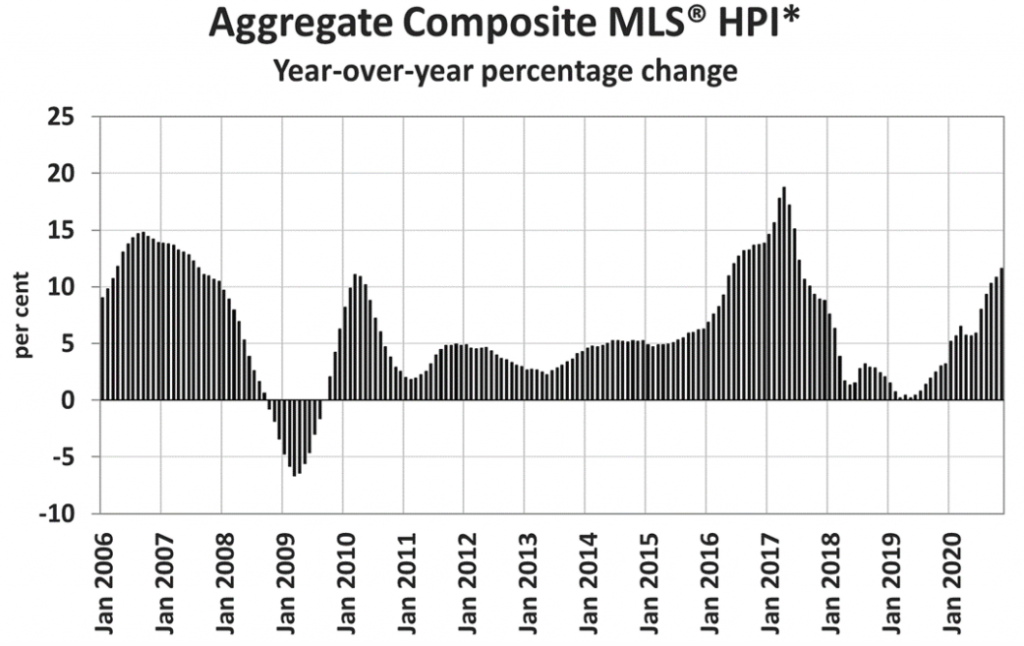How Canada’s National Home Sales Are Thriving Through Debt
The housing market is taking up a large chunk of the Canadian household debt. With 69% of Canadian debt coming from mortgage debt, it is keen to keep an eye out. Although prices may not rise to 2016’s levels, it’s still expected to rise faster than 1% a month. National home sales are now on pace to see their best year, however, there is still a counter with job losses and zero population growth
Real Estate Market by Steve Saretsky: No Froth
As everybody is well aware, housing is THE pillar supporting the Canadian economy. It is also responsible for burdening households with a mountain of debt. In fact, the majority of Canadian household debt, 69 per cent, is made up of mortgage debt and by continuing to pile on more debt, house prices have increased, contributing to a 70% increase in the aggregate net worth of Canadian households since the end of 2010.
And so, when the economy plunged into a deep recession, it’s no surprise policy makers were so quick to intervene. The Bank of Canada’s quantitative easing program ran into overdrive. Remember, Quantitative easing involves, large-scale purchases of government bonds which lower the interest rates or ‘yields’ on those bonds. This pushes down on the interest rates offered on loans (eg mortgages or business loans) and is designed to stimulate the economy by boosting a wide range of financial asset prices.
Yes, rising real estate prices are quite literally the desired outcome.
Ironically, when Bank of Canada Governor, Tiff Macklem, was asked this past week about concerns over rising debt loads and home prices, the Governor naturally downplayed those concerns. Quoting, “it’s certainly something that we’re watching, housing markets have come back very strongly, interestingly the strength has been a little less focused than usual in Toronto & Vancouver, and a little bit more spread across the country, which is a good thing. We’re not seeing the kind of frothy housing markets that we saw in 2016.”
Really?
National home sales are now on pace to have their best year ever, following another record high for the month of November. In fact, 2020 home sales will surpass previous highs set in 2016, with home prices now rising faster than 1% per month. This is despite mounting job losses and near zero population growth.
There are zero fundamentals supporting the rise in the housing market, other than the Bank of Canada’s printing press and people’s fears of a currency continuing to lose purchasing power.
When you consider the fact the printing press will run in overdrive until the economic recovery remains well underway, and inflation remains sustainably at 2%, I would argue these fears are warranted. After all, official inflation metrics are questionable at best, and subject to manipulation.
Three Things I’m Watching:
1. Canadian home prices rise again in November, up 11.6% year-over-year.

2. Canada sees slowest population growth since 1946 on travel bans.

3. More lockdowns will require more stimulus. Central bank balance sheets will continue to inflate.


About Steve Saretsky
Steve Saretsky is a Vancouver Residential Realtor and author behind one of Vancouver’s most popular Real Estate Blogs Vancity Condo Guide. Steve is widely considered a thought leader in the industry with regular appearances on BNN, CBC, CKNW, CTV and a contributor to BC Business Magazine. For more expert insights on the real estate market and trends, visit Saretsky’s website at www.stevesaretsky.com Steve Saretsky [email protected] 604-809-8149




